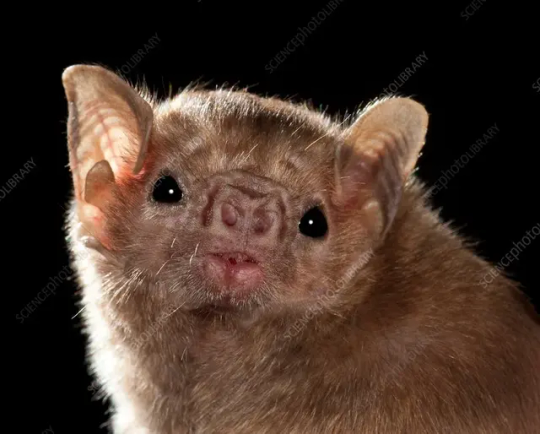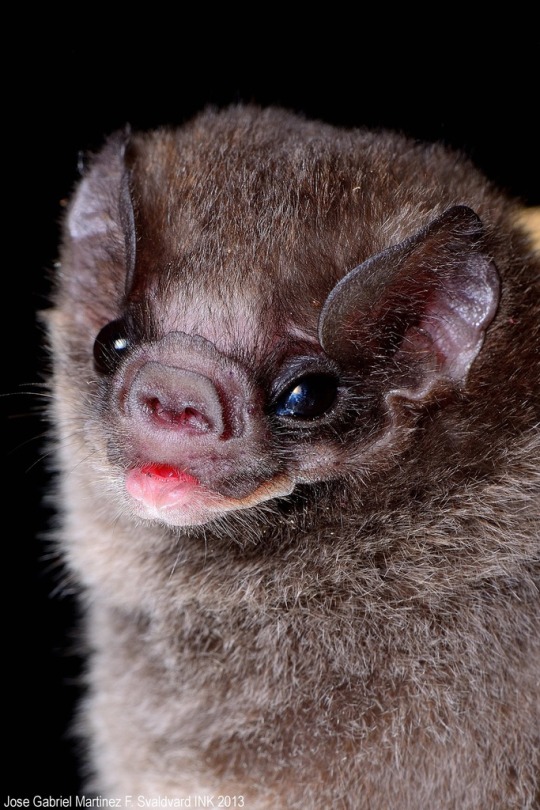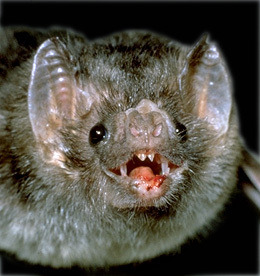#to mitigate the diseases they are vectors for are vaccination efforts and improved accessibility to healthcare
Explore tagged Tumblr posts
Note
Can you share some of your favorite bat facts? I wanna add more to my lil arsenal of cool random facts. :]
Of course! Apologies for the late response, I saw this at like 1am four days ago, forgot everything I knew about bats, and then fell asleep and only remembered I even got this ask today. Anyways! Some bat facts :)
Common Vampire bats are some of my absolute favourites, mostly because of their ability to run on the ground! They can gallop with their forelimbs and take off from the ground by leaping into the air and catapulting themselves with their wings, which is speculated to be how Pterodactyls took off as well! Most bats cannot take off from the ground, and must be elevated to take flight, so this is pretty cool. Makes sense too, since they mostly feed from the ankles of large mammals and so need ground maneuverability!
Here's a video of a vamp taking off, and here's a video of one walking around! I think their skittery movements and lil' faces are just the CUTEST, but I know I'm probably in the minority there. Also there's a large dish of blood in the second video, so fair warning there!
All three true Vampire bats have evolved special grooves in their mouths in order to act as a gutter of sorts to funnel the blood into their mouths, but the exact arrangement differs between them. The Hairy-Legged Vampire bat has a groove along the roof of the mouth, whereas the White-Winged and Common Vampire bats have lingual grooves under the tounge! Speaking of White-Winged Vampire bats, they're the only bats in the world with 22 teeth, for some reason (likely no reason since the molars are vestigial), AND they have scent glands in their mouths that might be used to deter predators. Pretty cool stuff!
Finally, all three species of true Vampire Bats are cute as hell. Look at these lil' guys!!



(left to right- White-winged, Hairy-legged, and Common Vampire bats!)
#idk why the vampire theme these guys are just always on the brain. I love them so much#they aren't scary at all! being a hematophage doesn't automatically make a creature scary or bad in any way#No worse than being a carnivore. the blood to blood contact makes them vectors for disease but that's not their fault#besides so would being carnivorous if they didn't have to kill their prey most of the time lol#I love and appreciate these beasts. They have an important place in the ecosystem and should be respected. the best that can be done#to mitigate the diseases they are vectors for are vaccination efforts and improved accessibility to healthcare#but that's a wholee other discussion lol. hate that i feel the need to go on the defensive when saying i like an animal I'm passionate abou#ANYWAYS tag ramble over. thank you for the ask!!! always love an excuse to talk about bats haha#ask#raybytheway#bat#common vampire bat#white-winged vampire bat#hairy-legged vampire bat
73 notes
·
View notes
Text
Surveillance Systems for Early Lumpy Skin Disease Detection and Rapid Response

Introduction
Lumpy Skin Disease (LSD) is a highly contagious viral infection that primarily affects cattle and has the potential to cause significant economic losses in the livestock industry. Rapid detection and effective management of LSD outbreaks are essential to prevent its spread and mitigate its impact. In recent years, advancements in surveillance systems have played a crucial role in early LSD detection and rapid response, leading to improved LSD care and control strategies.
The Threat of Lumpy Skin Disease
Lumpy Skin Disease is caused by the LSD virus, a member of the Poxviridae family. It is characterized by fever, nodules, and skin lesions on the animal's body, leading to reduced milk production, weight loss, and decreased quality of hides. The disease can spread through direct contact, insect vectors, and contaminated fomites, making it a major concern for livestock industries globally.
To know more about : -
Surveillance Systems for Early Detection
Traditional methods of disease detection relied on visual observation and clinical diagnosis. However, these methods can delay the identification of LSD cases, allowing the disease to spread further. Modern surveillance systems leverage technology to enhance early detection. These systems utilize a combination of methods, including:
Remote Sensing and Imaging: Satellite imagery and aerial drones equipped with high-resolution cameras can monitor large livestock areas for signs of skin lesions and changes in animal behavior. These images are analyzed using machine learning algorithms to identify potential LSD outbreaks.
IoT and Wearable Devices: Internet of Things (IoT) devices such as temperature sensors, accelerometers, and RFID tags can be attached to cattle. These devices continuously collect data on vital parameters and movement patterns, allowing for the early detection of abnormalities associated with LSD infection.
Data Analytics and Big Data: Surveillance data from various sources, including veterinary clinics, abattoirs, and livestock markets, can be aggregated and analyzed using big data analytics. This enables the identification of patterns and trends that may indicate the presence of LSD.
Health Monitoring Apps: Mobile applications allow farmers and veterinarians to report suspected cases of LSD and track disease progression. These apps facilitate real-time communication and coordination, aiding in early response efforts.
Rapid Response and LSD Care
Early detection is only half the battle; a rapid and coordinated response is equally crucial. Surveillance systems are not only capable of identifying potential outbreaks but also play a pivotal role in implementing effective LSD care strategies:
Isolation and Quarantine: Detected infected animals can be isolated and quarantined promptly, preventing the further spread of the disease. Surveillance data helps identify high-risk areas and individuals for targeted quarantine measures.
Vaccination Campaigns: Based on surveillance data indicating disease prevalence in specific regions, targeted vaccination campaigns can be initiated to immunize susceptible animals and halt the spread of LSD.
Vector Control: Surveillance systems can track insect vectors responsible for transmitting the LSD virus. This information enables the implementation of vector control measures to reduce disease transmission.
Resource Allocation: Effective response requires proper resource allocation. Surveillance data helps authorities allocate veterinary personnel, medical supplies, and equipment to affected areas efficiently.
Challenges and Future Directions
While surveillance systems offer promising solutions, challenges remain. Limited access to technology, particularly in rural areas, can hinder the implementation of these systems. Data privacy concerns and the need for robust cybersecurity measures are also crucial considerations.
In the future, the integration of artificial intelligence (AI) and machine learning can further enhance the accuracy of disease prediction models. Real-time genetic sequencing of the virus can provide insights into its mutations and evolution, aiding in the development of more effective vaccines.
Conclusion
Surveillance systems have revolutionized the way we detect, respond to, and manage Lumpy Skin Disease outbreaks. The ability to identify potential cases early and respond rapidly has significantly improved LSD care and control strategies. As technology continues to advance, these systems will play an increasingly vital role in safeguarding livestock industries against the threat of Lumpy Skin Disease and other contagious infections. Effective collaboration between veterinary professionals, farmers, researchers, and technology developers will be key to successfully harnessing the potential of surveillance systems for the benefit of animal health and the global economy.
Read more : -
2 notes
·
View notes
Text
Mosquito Control Tips
New Post has been published on http://lovehorses.net/mosquito-control-tips/
Mosquito Control Tips
Hoof prints can create many small puddles that are ideal for virus vector mosquitoes, so you might consider fencing off ponds access in some areas, and keep the footing dry (or well-drained with gravel) in the access area.
Photo: Anne M. Eberhardt/The Horse
Mosquitoes are more than just an annoyance: they're a disease threat. Manage your property to safeguard your animals (and you).
Mention mosquitoes to most people and you will conjure up clear visions of the annoying little bloodsuckers that leave you itching. But horse owners and those living near humid, swampy areas often are more aware of the fact that mosquitoes pose a significant health threat to both animals and humans. To protect humans from disease-causing pathogens carried by mosquitoes, there are public health officials, researchers, and associations who wage a strategic effort to reduce mosquito populations. For the health and welfare of our horses, it is up to us to put together a plan for reducing mosquitoes on our farms.
Why You Should Care
The University of California Division of Agriculture and Natural Resources has put together a comprehensive resource entitled "Managing Mosquitoes on the Farm," authored by Sharon Lawler, PhD, and Gregory Lanzaro, PhD, which provides the basics of agricultural mosquito control. (You can access it at http://anrcatalog.ucanr.edu/pdf/8158.pdf.) They point out that mosquitoes can do everything from spread potentially fatal disease to decrease property values and cause labor problems.
According to the American Mosquito Control Association (AMCA), more than 200 of the 2,500 existing species of mosquitoes are active in the United States, so mosquitoes present a real danger. For example, West Nile virus is a significant threat to both humans and horses. West Nile virus is perhaps the most well-known of the encephalitides (encephalomyelitis-causing diseases, or diseases that affect the central nervous system) affecting horses, due to its relatively recent emergence in the United States, but Eastern and Western equine encephalomyelitis viruses (EEE and WEE) are very real threats also.
These diseases cause serious clinical signs, including fever, depression, loss of appetite, weakness, central nervous system disorders (ataxia or lack of coordination, chewing movements, head pressing, a "sawhorse" stance, circling, paddling motion of the limbs, and convulsions), irritability and aggressiveness toward handlers, blindness, excitability, and abnormal sensitivity to light and sound. Although not all horses that contract encephalomyelitis display clinical signs–some have latent infections–the mortality rate for those that do develop clinical illness is 20-33%.
Beyond the threat of disease, "animals tormented by mosquitoes do not feed properly," according to the Lawler/ Lanzaro paper. This often results in weight loss, which can compromise the success of sale prep or any show endeavors.
Controlling mosquitoes is a multi-pronged effort that breaks down to two major categories–public control efforts and private control measures.
Public Control Efforts
State and sometimes local departments of health or vector control districts have extensive monitoring and trapping systems for mosquitoes. They routinely test for the presence of viruses in the trapped mosquitoes and when they detect a virus incidence at high frequency, they communicate their findings to the Centers for Disease Control and activate a plan for mosquito reduction. Most health departments or vector control districts publish mosquito spraying schedules on their Web sites to notify citizens.
According to the AMCA in material from its Web site, most public efforts are "performed following the Integrated Mosquito Management (IMM) concept. IMM is based on ecological, economic, and social criteria and integrates multidisciplinary methodologies into pest management strategies that are practical and effective to protect public health and the environment and improve the quality of life."
Rusty Ford, equine programs manager in the office of the Kentucky State Veterinarian, says, "Horses are often considered sentinel animals for a disease like West Nile virus." Birds, horses, and humans can become infected after only a few viral particles enter the circulatory system.
"The (Kentucky) Department of Public Health does tremendous amounts of mosquito trapping," Ford continues. "Once a risk is identified, then they will develop a plan to mitigate the risk."
Kentucky officials in November 2008 identified a case of EEE in a naturally infected horse. This disease had not been seen in the state in 13 years, so it was a cause for concern.
Ford recommends that horse owners make sure their horses are current on vaccinations and practice good mosquito management on the farm.
What You can Do
Reduce potential breeding grounds Reduce the number of mosquitoes on and around your property by destroying or minimizing habitats for larval development. Eliminate areas that collect standing water, such as ruts in roads, ditches, old tires, and other containers. Depending on temperature, it takes larvae four to 14 days to mature, according to the Lawler/Lanzaro information, so make sure water is not left standing for more than four days.
The AMCA recommends eliminating as many mosquito larval habitats as possible by disposing of old tires, drilling holes in the bottom of any containers, clearing roof gutters of debris, and filling tree holes and any other areas of stagnant water. Tarps can trap rainwater, so make sure you dump it off of them. Change the water in any birdbaths or wading pools regularly. If you have a septic system cesspool or cistern, make sure there is no leakage or seepage.
If you have ponds or ditches on your property, make sure you keep the weeds mowed. Natural predators, such as fish, birds, bats, and other insects, can hunt mosquito larvae more effectively with clear banks. Livestock waste adds nutrients to the water that can benefit mosquitoes. Hoof prints can create many small puddles that are ideal for virus vector mosquitoes, so you might consider fencing off ponds access in some areas, and keep the footing dry (or well-drained with gravel) in the access area.
The area around watering troughs also can become muddy, creating thousands of tiny pockets for mosquitoes to breed. Correct this by promoting proper drainage around the water troughs. Clean tanks often to reduce the potential for mosquito breeding in the water.
If you have creeks, try to keep water flowing to discourage mosquito egg-laying. Consider digging additional ditches if necessary to keep the water flowing.
If you are farming on your property, you know how important efficient use of water is for healthy crops. Efficient water use will help reduce mosquito breeding as well. Proper land leveling, irrigation, drainage, and tail water management are important for any property and can cut back on irrigation costs.
Biologic and chemical control These agents can supplement good preventive management measures. Some states require permits to use pesticides, so make sure you adhere to regulations when using biological or chemical controls on your property.
Different biocontrol substances target different mosquito life stages. Generally, you can control larvae by adding substances directly to the water in which they are living. The introduction of bacteria is a common biological control. Bacillus thuringiensis israelensis (Bti) is a bacterium that contains a chemical that is toxic to mosquitoes. It is available as a floating briquette, a spray, or granules. Bti is most effective against larvae that are actively feeding. Bacillus sphaericus (Bs) is another bacterium used to infect mosquito larvae and kills them over several weeks.
In addition, some biological organisms eat mosquito larvae and pupae. Others contain poisons that kill them, or still others cause infections that can kill them. Some chemicals such as special oils are lethal to larvae and work by suffocating them, and still others disrupt their physiological development. Biologic compounds targeting mosquito larvae development often are more expensive, but they don't kill as many beneficial insects and natural predators. Introducing the mosquitofish (also known as Gambusia affinis), a top-feeding fish, can be an effective method of reducing mosquitoes in permanent water, as they are an effective natural predator. Check your local regulations, because in some states these fish are considered a non-native species and it might be illegal to release them into natural waters, although they sometimes are permitted in tanks and artificial ponds.
Mosquito control chemicals also can be very effective. Experts at the University of California recommend rotating classes of chemicals so that you do not cause chemical resistance over time. Methoprene is a commonly used chemical that kills mosquitoes as they transform into adults (it's an insect growth regulator).
Because mosquito larvae need to breathe, the use of oils in a water source can suffocate both larvae and pupae. A commonly used oil in California is Golden Bear Oil, according to Lawler and Laranzo. It is a lightweight oil used only for mosquito control. Other oils can drown any aquatic insects that need to breathe air, so using them can temporarily disrupt the control that predator insects offer. Oil also causes bird feathers to mat, adversely affecting young birds in colder temperatures. The Golden Bear Oil will not harm waterfowl and most aquatic insects. Talk to officials from your local mosquito abatement district, mosquito and vector control district, or state health department for advice.
Organophosphates and pyrethroids are families of chemicals that often are used for adult mosquito control. They are neurotoxins that block the mosquito's nerve cells and prevent them from operating properly. The chemicals must be handled with care and used only as directed, as they can be toxic to humans and animals. They are often applied by fogging an infested area. Unfortunately, the effects are only temporary, but they can be effective in interrupting virus transmission.
Personal control measures According to the USDA, important precautions include wearing light-colored long-sleeved shirts and pants, using mosquito repellents that contain DEET when outdoors, avoiding being outdoors during times of the day that mosquitoes are most active (early morning, dusk, and evening), and eliminating sources of standing water where mosquitoes breed. Research shows that products containing about 24% DEET were effective for about five hours; products containing 20% DEET were effective for about four hours; and products containing 6.5% DEET were effective for about two hours.
Take-Home Message
Be aware that mosquitoes are more than an annoying inconvenience. Take positive management action on your property, reducing or eliminating mossquitoes to safeguard humans and horses. Make sure your horses are up to date on their vaccinations, especially for mosquito-borne viruses such as West Nile virus, EEE, and WEE. Remember, when it comes to mosquitoes, the best approach is preventing their proliferation in the first place.
About the Author
Liza Holland
Liza Holland is a freelance writer and voice talent based in Lexington, Ky.
0 notes